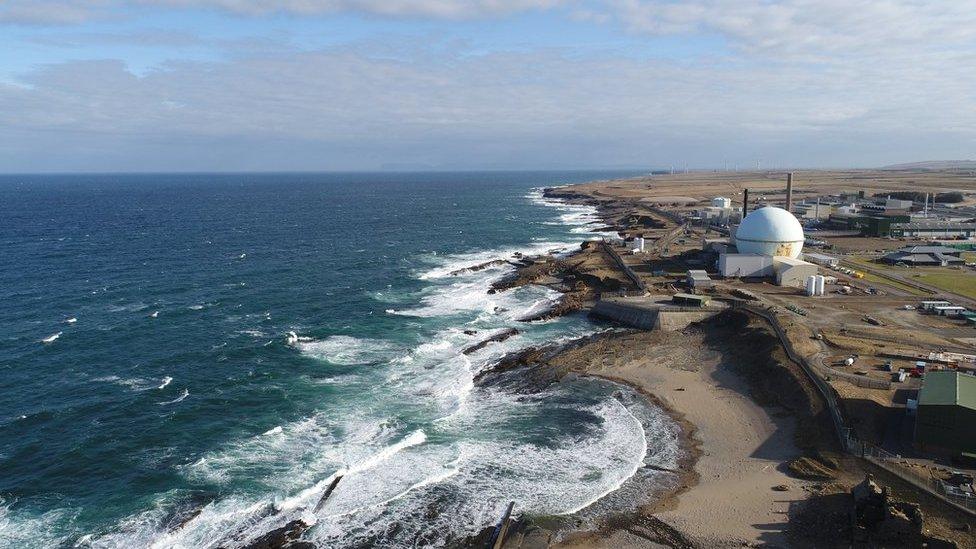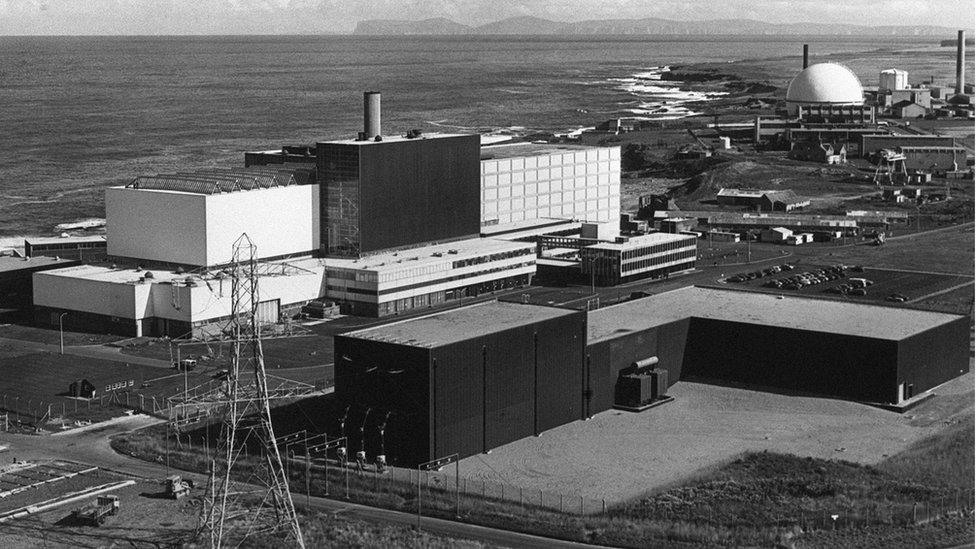Dounreay: 'World's deepest nuclear clean-up' to begin
- Published

Dounreay near Thurso is in the process of being decommissioned and demolished
The first work in a clean-up of a 1950s-built shaft at a nuclear power research complex is to begin this year.
The shaft plunges 65.4m (214.5ft) below ground and poses one of the biggest challenges in the demolition of Dounreay in Caithness.
Radioactive waste was disposed there from 1959 until 1977 when an explosion ended the practice.
Tackling the shaft has been described as the "world's deepest nuclear clean-up".
Colourful myths surround the site, including claims that a former worker dropped his mother-in-law's ashes inside to comply with her wish to be scattered somewhere unusual.
An unwanted car was also said to have been dumped in the shaft, which is 4.6m (15ft) wide in places.

Dounreay was used for research into fast breeder reactors and for testing submarine reactors
A £7.5m contract has been awarded for the first steps in this work, due to begin in late autumn, and also to carry out similar engineering work at another site at Dounreay called the silo.
It is described as being like a swimming pool with a concrete roof and was also used for the disposing of radioactive waste.
Engineering firms Nuvia and Graham Construction have been awarded the contract for work that would eventually lead to the waste being removed.
David Hubbard, of Dounreay Site Restoration Ltd, said: "The shaft and silo contain solid waste and sludge which must be retrieved and repackaged for safe above-ground storage.
"I'm very pleased that we are one step closer to the clean-up of these historic waste facilities through the award of this contract."
Dounreay, near Thurso, was the UK site for the development of fast reactor research from 1955 to 1994.
The facility on the north Caithness coast is in the process of being closed down, demolished and cleaned up.